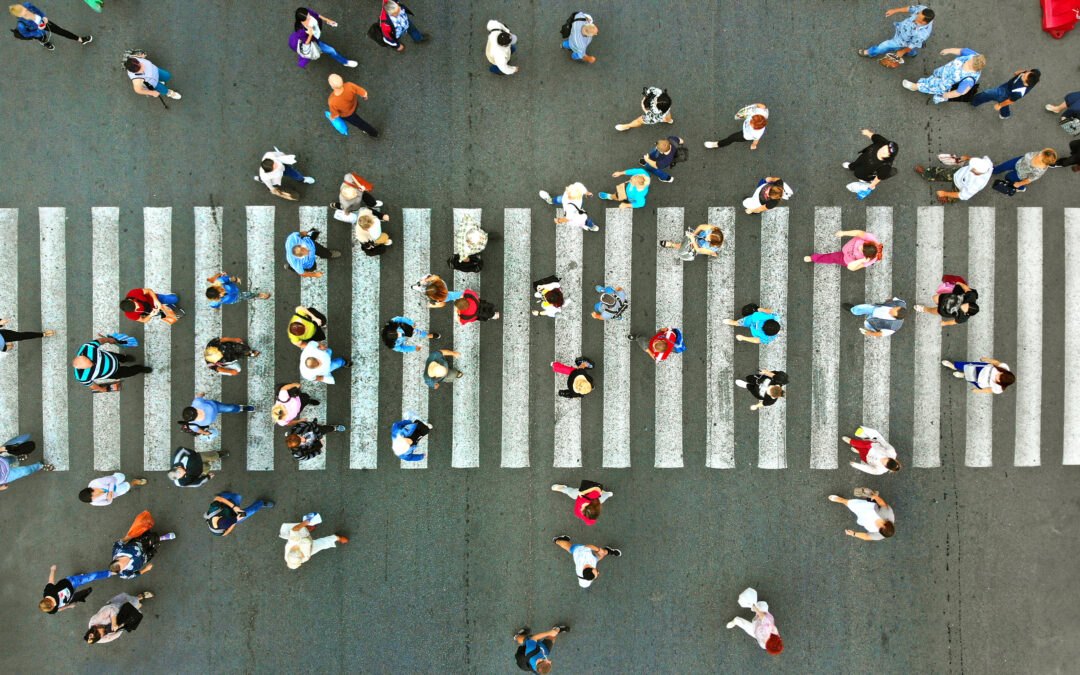In the 1950s and 60s, urban areas saw a mass migration to suburban and exurban areas, leading to an increase in personal car ownership and commuter traffic. Alongside this increase in car traffic came the increased implementation of highways and large roads, which at the time were often placed through or beside low-income communities. Transportation planning and design took on a car-centric approach, and the result was transportation inequity. Now, cities and transportation planners are tasked with finding ways to create more equitable transportation solutions that benefit all travelers.
What is Transportation Equity?
Transportation equity is accessible and affordable transportation for everyone, with resources, costs, benefits, and services being distributed fairly as needed. Essentially, it means that transportation benefits (such as frequency and affordability) and transportation costs (such as congestion and safety issues) are dispersed equitably, rather than some travelers bearing the costs while other travelers receive all the benefits. The goal of transportation equity is to include social justice and socio-economic impact in transportation planning, in order to create systems that benefit more people in ways that make the biggest difference for quality of life.
Who is Most Affected by Transportation Inequity?
Those most affected by transportation inequity are seniors, people with disabilities, people with low incomes, people of color, and those living in underserved areas. People who are low-income, who live in underserved areas, and seniors are the most likely to be injured or killed while walking, with age and poverty increasing the chances of this risk by 50% or more. For underserved and low-income neighborhoods, this is often due to a lack of safety infrastructure and living near high-speed, high-volume roadways, such as freeways. Those with disabilities have additional transportation challenges to overcome, such as lack of curbside ramps and accessible transport. The same groups who are most affected by transportation inequity are those without reliable access to personal vehicles, meaning that to increase equity, alternative modes of transport need to be invested in.
What are the Benefits of Transportation Equity?
When cities invest in transportation equity, it creates a variety of benefits, including social and economic benefits. These include:
- Increased access to job opportunities
- Increased mental wellbeing through increased social access
- Increased health and access to physical activities
- Increased access to necessities, such as groceries and healthcare
- Increased economic stimulation through increased mobility
4 Ways to Address Transportation Equity
1. Safety Infrastructure
Safety equipment includes equipment such as stop signs, traffic signals, curb ramps, and sufficient lighting. In underserved areas with high volume or high-speed traffic, particularly when intersected with residential or high pedestrian areas, stop signs and traffic signals can greatly contribute to pedestrian safety. Curb ramps allow for people with disabilities, such as those in wheelchairs, to have increased access to transportation without having to take longer, more complex routes. Sufficient lighting has multiple safety benefits, increasing safety for those traveling at night or early morning. For pedestrians, lighting can decrease risk, and one study found that women are more likely to take travel routes and feel safe using public transport when there is sufficient lighting.
2. Pedestrian Amenities
Pedestrian amenities include crosswalks, extended walk times, audible pedestrian signals, and medians at large intersections and roadways. These amenities allow travelers, particularly seniors, children, people with disabilities, and those living near high volume roadways, safer conditions for walking and crossing roads. People with lower incomes and those living in underserved areas are more likely to walk longer distances to work or to access transit, and that may include crossing high-volume, high-speed roadways not optimized for pedestrian access. By including pedestrian amenities and safety features in roadway design, pedestrian traffic can be more efficient and less dangerous.
3. Accessible Transit
Accessible transit involves public transit that is accessible to everyone, including those who need it most, such as those without personal vehicles. One of the largest contributors to accessible transit is affordability. For those who need public transit to access schools, jobs, and necessities, transit needs to be affordable in order for it to be useful. Low-income households spend almost double the amount of money on transport than middle-class households do. If people cannot afford public transit, then no matter how close or fast it is, it will not be accessible. Another large contributor to accessibility is location. People need to access public transit in order to use it, which includes distance to transport, but also frequency. An example of this is people who work night shifts or other irregular hours that may have severely restricted transport options because of their work schedule. Transport options need to be close enough to use, and frequent enough to be useful.
4. Complete Streets Policies
Complete streets are designed to meet the needs of all users, including all modes of transportation, all ages, and all abilities. These policies and guidelines work at the planning stage, so networks are designed for everyone, not just motorists. The goal of complete street policies is to create safer, more equitable, sustainable roadways that benefit all users. As of 2019, there were over 1400 complete streets policies in the United States, and over 100 policies in Canada. These policies and guidelines are a big step forward for the integration of transportation equity.
As cities and transportation planners aim to create more equitable transportation, the goal is not to abandon motorist traffic, but to find ways to increase access to reliable, sustainable transportation for all, which has significant economic and social benefits. Ultimately, the best way to address transportation inequity is to address those most affected directly, and fund projects that will have the most significant impact for travelers. Through initiatives like complete streets, transportation can become accessible and equitable.

